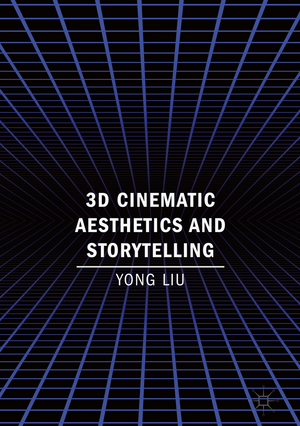3D Cinematic Aesthetics and Storytelling
Autor Yong Liuen Limba Engleză Hardback – 18 iul 2018
| Toate formatele și edițiile | Preț | Express |
|---|---|---|
| Paperback (1) | 382.36 lei 6-8 săpt. | |
| Springer International Publishing – feb 2019 | 382.36 lei 6-8 săpt. | |
| Hardback (1) | 503.18 lei 6-8 săpt. | |
| Springer International Publishing – 18 iul 2018 | 503.18 lei 6-8 săpt. |
Preț: 503.18 lei
Preț vechi: 591.98 lei
-15% Nou
Puncte Express: 755
Preț estimativ în valută:
96.29€ • 104.56$ • 80.89£
96.29€ • 104.56$ • 80.89£
Carte tipărită la comandă
Livrare economică 23 aprilie-07 mai
Preluare comenzi: 021 569.72.76
Specificații
ISBN-13: 9783319727417
ISBN-10: 3319727419
Pagini: 218
Ilustrații: XIV, 217 p. 21 illus., 14 illus. in color.
Dimensiuni: 148 x 210 mm
Greutate: 0.53 kg
Ediția:1st ed. 2018
Editura: Springer International Publishing
Colecția Palgrave Macmillan
Locul publicării:Cham, Switzerland
ISBN-10: 3319727419
Pagini: 218
Ilustrații: XIV, 217 p. 21 illus., 14 illus. in color.
Dimensiuni: 148 x 210 mm
Greutate: 0.53 kg
Ediția:1st ed. 2018
Editura: Springer International Publishing
Colecția Palgrave Macmillan
Locul publicării:Cham, Switzerland
Cuprins
1 Introduction: Stereoscopic Narrative, Spectacle, and 3DOntology.-2.From ‘Dimensional Effects’ to Digital 3D Cinema.-3.From ‘Redemption of Physical Reality’ to ‘Recreation of Perceptual (Hyper)reality’.-4.Stereoscopic Timespaces: Directionality, Dimensionalityand Temporality.-5.Volumetric Dramaturgy: Staging Drama in Depth.-6.Within and Without: Trans-Subjective Narrative Perspectives in Digital 3D Cinema.-7.Between Depth and Flatness: Shaping Stereoscopic Ontologies.-8.Conclusion
Notă biografică
Yong Liu is Assistant Professor in Design & Creative Industry at University of Brunei Darussalam, Brunei. He publishes extensively on 3D cinematic aesthetics, digital storytelling and Chinese movie industry.
Textul de pe ultima copertă
This book argues that 3D films are becoming more sophisticated in utilising stereoscopic effects for storytelling purposes. Since Avatar (2009), we have seen a 3D revival marked by its integration with new digital technologies. With this book, the author goes beyond exploring 3D’s spectacular graphics and considers how 3D can be used to enhance visual storytelling. The chapters include visual comparisons between 2D and 3D to highlight their respective narrative features; an examination of the narrative tropes and techniques used by contemporary 3D filmmakers; and a discussion of the narrative implications brought by the coexistence of flatness and depth in 3D visuality. In demonstrating 3D cinematic aesthetics and storytelling, Yong Liu analyses popular films such as Hugo (2011), Life of Pi (2012), Gravity (2013), Star Trek Into Darkness (2013, and The Great Gatsby (2013). The book isan investigation into contemporary forms of stereoscopic storytelling derived from a unique, long-existing mode of cinematic illusions.
Caracteristici
Provides a comprehensive discussion on 3D cinematic storytelling and aesthetics Analyses digital 3D films that represent the current 3D wave, including Up (2009), Life of Pi (2012) and Gravity (2013) Presents a timely contribution to new fields of media aesthetics and narrative research Includes comparative examination of 2D and 3D visual ontology Engagingly written and appeals to media scholars, students, professionals and policy-makers interested in media production and theory
